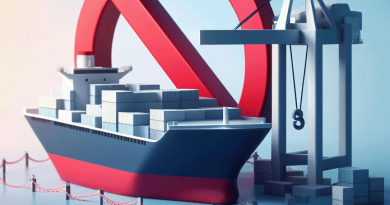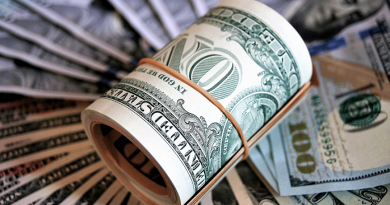New wine in new bottles
Bipul Chatterjee is Executive Director and Sneha Singh a Research Associate at CUTS International, a global public policy think- and action-tank on trade, regulation and governance
The running consensus in trade policy discourse in India is that Indian Free Trade Agreements (FTAs) have been at best, a mixed bag and at worst, the cause behind stagnancy in the Indian manufacturing sector. There is some truth in the statement.
The preference utilisation rate of Indian FTAs is among the lowest in Asia1. Additionally, increasing import demand and trade deficit with most FTA partners has added to the ire2. However, it is another matter that the deficits would have occurred regardless of FTAs being in place3.
Disenchantment and sour grapes led to a noticeable hiatus during which India did not see bilateral or regional trade negotiations to fruition4. This culminated with India walking away from the world’s largest trade deal – the Regional Comprehensive Economic Partnership (RCEP) for Asia and the Pacific in 2020.
Fortunately, there is now a break in the pattern. India recently concluded its first ‘new age FTA’ with the United Arab Emirates – her third-largest bilateral trading partner, with unprecedented speed and enthusiasm5.
With several major FTA negotiations ongoing or lined up, and the simultaneous revamping of policies on industry, infrastructure, logistics, and export, among others, there is a clear and unambiguous signal from the Government – India is determined to give export-led economic growth another shot.
This second chance is as timely as it is necessary. With a median age of twenty-eight, India stands at the cusp of reaping a demographic dividend or spiraling into a demographic disaster. India needs a massive upsurge in employment opportunities, and the manufacturing sector, not services can support these numbers.
The geopolitical stars have aligned as well. Foreseen as “an engine for regional growth and development” in the Indo-Pacific, India has large shoes to fill6. Well-positioned to shape alternate and resilient supply chains, and manufacture strategic as well as global public goods for the world, India can be a driving force for the collective good.
Thus, even as the international community largely turns inwards and embraces gated globalisation, there is an understanding that supporting India’s rise is an essential investment and excellent bet, not just effective altruism.
India has discerned this window of opportunity brought by the recalibration of international trading and geopolitical forces. With the much-awaited overhaul of the Ministry of Commerce and Industry (primarily to strengthen negotiation capacity), the world is set to see a lot more dynamism in India’s FTA negotiations. So, what can be expected from more new age FTAs?
Some early and late harvests
First, there is an attempt to swiftly integrate with regional and global value chains by incentivising investments into manufacturing while simultaneously breaking through trade barriers in export markets.
Accordingly, hand in hand with trade liberalisation through FTAs, the Government has launched Production Linked Incentive Schemes (PLIs) in fourteen sectors to grant significant financial incentives on achieving specified sale targets.
Notably, the India-UAE Comprehensive Economic Partnership Agreement (CEPA) does not liberalise sectors covered by the Government’s ambitious (PLI) Schemes. However, the tariff on inputs including raw materials for PLI-covered sectors like steel, textiles, and pharmaceuticals is being brought down.
This is a smarter and more sustainable approach towards liberalisation (especially seen against the backdrop of India’s infamous inverted tariffs) and reorients the industry to engage with trade policies in a positive manner.
Thus, even as the comfort and security of the domestic market is being subject to a sunset clause (the PLI scheme is valid for a fixed period), the industry is being nudged to focus on quality and move up the value chain to become competitive in foreign markets.
Second, the differentiation between strategic and economic interests is blurring. Earlier FTAs mostly aimed at neighbourhood bonhomie (India-Sri Lanka, India-Nepal) and/or regional integration (South Asian Free Trade Area, Asia-Pacific Trade Agreement), and the influence of foreign policy on trade was limited to seeking engagement with partners in the East (India-Association of Southeast Asian Nations, India-South Korea, India-Japan).
However, recent geopolitical and geo-economic churns mean that India’s engagement will now involve diversified partners that may offer limited economic benefits in comparison to larger strategic ones. For instance, a Preferential Trade Agreement with Uzbekistan is on the cards to build connectivity with Central Asia, in light of political developments in Afghanistan, among other factors.
Third, apart from new partners, India is also looking at new agendas. With the signing of the UAE CEPA having chapters on digital trade and government procurement – areas that India vociferously opposes linking trade with, at the World Trade Organization (WTO) – it is now clear that India is being pragmatic and flexible in its approach.
With several major FTA negotiations ongoing or lined up, and the simultaneous revamping of policies on industry, infrastructure, logistics, and export, among others, there is a clear and unambiguous signal from the Government – India is determined to give export-led economic growth another shot
In fact, the digital trade chapter also takes into account consumer protection, an oft-overlooked interest in trade negotiations, despite consumer welfare being the raison d’être for trade for garnering increased access, choice, and quality of goods and services.
Furthermore, in its first round of FTA negotiations with the United Kingdom, India covered twenty-six policy areas including gender and sustainability. This is a welcome development and bodes well for smoothening irritants in negotiations with the European Union and the United States of America as well.
Taken together, they reflect that rising public consciousness is incentivising producers to enter a ‘race to the top’ and distinguish products from competitors based on their social values rather than cost alone.
Thus, domestic exporters will inevitably need to upgrade their products and processes as per increasingly higher environmental/labour standards in developed countries.
By signing up for gradual and incremental Trade and Sustainable Development obligations for greater market access, India would incentivise exporters to comply with its provisions to avail the FTA’s benefits.
This voluntary acquiescence to short-term pain for long-term gains also charts a realistic path for attaining a just transition, by shifting the Indian workforce from low in productivity, highly polluting and informal ventures to resource-efficient manufacturing that is sustainable and formal in nature.
Does this also mean that in time, having tested capacities to navigate new waters, India will change its default negotiating stance at the WTO from a no to a maybe, or even yes? Perhaps. This and next decade’s experience with new age FTAs will be crucial in shaping India’s multilateral position on WTO-plus and WTO-x issues.
Overall, though, the trends decipherable from the breadth and depth of recent FTA negotiations lend hope for a modern, holistic approach that synchronises India’s industrial, trade, and strategic interests to achieve her ambitious domestic and international objectives. In this context, the following are a few recommendations to further invigorate India’s modern FTA strategy.
Fresh fields and new pastures
First, FTAs with like-minded and developed democracies offer a great opportunity to harness the synergies between trade, on the one hand, and technology and innovation, on the other. Developed democracies like the US, EU, and the UK hold immense value for collaboration in critical and emerging technologies and fostering talent.
For instance, cooperation amongst like-minded countries can shape standards for emerging technologies to ensure interoperability, privacy, and transparency. The Quad Critical and Emerging Technology Working Group aims to facilitate coordination on technology standards development.
FTAs with these partners should complement this resolve and ensure that standards for emerging technology align with the principles outlined by the WTO TBT (Technical Barriers to Trade) Committee’s decision in 20007. This would ensure that these standards do not fragment markets and receive the widest commercial acceptance.
Beyond serving strategic interests, the role of technology and innovation will be critical in ensuring sustainable economic growth. A dedicated chapter/provisions on innovation could address concerns of equitable access to green goods and technologies through their transfer/licensing at fair and reasonable terms.
This is an especially valid compromise where the use of such technologies is made inevitable by environmental standards or regulations that impact the exports of developing countries.
Moreover, innovation and liberalised trade can incentivise labour-friendly technologies8. Such technologies can increase labour productivity by increasing human capital (for instance through personalised education/skilling through AI-enabled channels) or through direct support to workers (for instance through augmented reality or machine learning) for improved worker performance and workplace safety9.
Second, India should develop a work programme to assess the capacity building required to operationalise deeper regulatory coherence through Good Regulatory Practices (GRP). GRP provisions in the United States-Mexico-Canada Agreement (USMCA) and the US-Brazil Protocol Relating to Trade Rules and Transparency include obligations on regulatory coordination and planning, regulatory impact assessment, and retrospective reviews, among others.
Giving stakeholders – both foreign and domestic – adequate opportunity to comment on proposed regulations helps prevent trade barriers. This is more efficient than working to remove them.
Building on the previous point on innovation, the new age FTAs could also provide opportunities to scale Mutual Recognition Agreements (MRAs) between regulatory authorities for encouraging sharing of information and fostering mutual reliance in regulating emerging technologies like AI and cyber-security.
For instance, regulatory facilitation witnessed during the pandemic allowed Indian health authorities to cooperate with the US Food and Drug Administration and the Medicines and Health products Regulatory Agency of the UK to arrive at Emergency Use Authorisations. Lessons and principles from such partnerships can be carried forward for swiftly handling future innovation in other areas.
Finally, when navigating new territory, it’s best to prepare for foreseeable second and third-order effects. Knowing that competition and innovation create winners and losers, the wisdom of a holistic policy will lie in ensuring that adequate adjustment mechanisms exist for compensating those who suffer due to trade liberalisation.
There is a need to marry new-generation FTAs with good old education and migration policies. A fund created under the aegis of the FTAs to support a trade adjustment programme is an example.
India’s modernised FTA strategy is already breaking past barriers – several of which were self-imposed. Moreover, disruptive geopolitical, technological, and climatic changes have birthed emerging opportunities as multiplier forces for an already potent tool.
If the momentum seen with the UAE CEPA continues, India’s upcoming negotiations for 16 new and seven existing agreements hold tremendous potential to shape the economic, social, and strategic trajectory of the country and beyond.
Endnotes
1. As per the Asian Development Bank, India’s FTA utilisation rate falls between 5 percent and 25 percent.
2. Chandrima Sikdar & Biswajit Nag, 2011. “Impact of India-ASEAN Free Trade Agreement: A cross-country analysis using applies general equilibrium modelling,” Asia-Pacific Research and Training Network on Trade (ARTNeT), an initiative of UNESCAP and IDRC, Canada.
3. Sunil Jain, “If You Can’t Do RCEP, Can’t Do US/EU Either,” Financial Express, November 11, 2019.
4. The last major trade deal, before India-UAE CEPA was with Japan in 2011.
5. Joint India-UAE Vision Statement – Advancing the India-UAE Comprehensive Strategic Partnership: New Frontiers, New milestones, February 18, 2022
6. Statement by the White House Principal Deputy Press Secretary Karine Jean-Pierre to reporters, 15 February, 2022
7. WTO TBT Committee, Principles for the Development of International Standards, Guides and Recommendations, 2000 attempt to ensure transparency, openness, impartiality, and consensus, effectiveness and relevance, coherence, and to address the concerns of developing countries.
8. M Vivarelli, Innovation and employment, IZA World of Labor, May 2015.
9. Mohd Javaid, Abid Haleem, Ravi Pratap Singh, Rajiv Suman, Substantial capabilities of robotics in enhancing industry 4.0 implementation, Cognitive Robotics, Volume 1, 2021, Pages 58-75.




